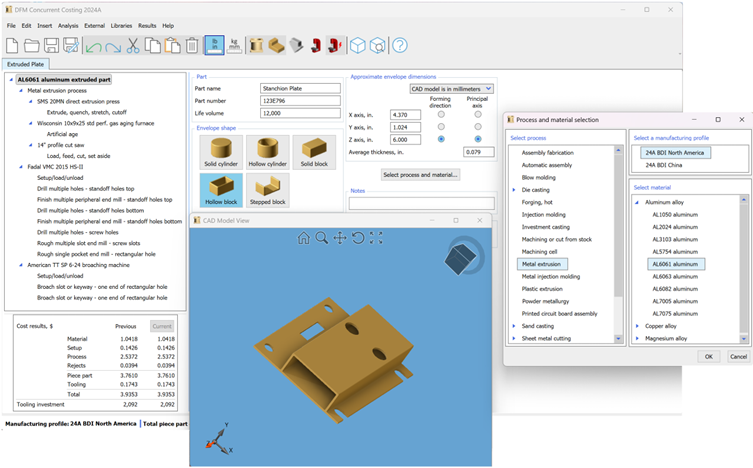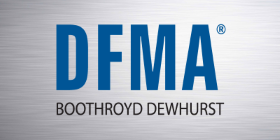DFMA: Should Costing Software
DFMA: Should Costing
Understand cost drivers early and design to target cost. DFMA: Should Costing provides an immediate, thorough view of manufacturing cost drivers and establishes a benchmark for what your product should cost. Explore alternative processes and materials, specify tolerances and surface finishes, and see cost results update instantly. As you select effective shape-forming processes and refine features, your design becomes cost-optimized.

Why Teams Choose DFMA: Should Costing
Defensible Accuracy—Not Guesswork
Every estimate is built from process physics, machine capability, material behavior, and tolerances—so you can show why a part should cost X, not just that it does.
- Step-by-step cost build-ups and assumptions
- Instant sensitivity to tolerances, finishes, and features
Fast Time to First Estimate
Out-of-the-box libraries let new users generate credible should-costs in days, not months. Customize only where it matters.
- Hundreds of pre-modeled processes, machines, and materials
- Lightweight onboarding; teams self-sufficient quickly
Guided Analysis That Surfaces Big Drivers
DFMA’s guided costing focuses your effort on the few inputs that move the number, so engineers iterate faster and cost teams avoid rabbit holes.
- Highlights high-impact drivers automatically
- Reduces model churn and rework
Built for Concurrent Engineering
Introduce cost reality at concept and early design to align engineering, sourcing, manufacturing, finance, and suppliers.
- Cost targets linked to design decisions
- Shorter time-to-decision with fewer late surprises
Supplier-Ready Transparency
Share the specific inputs behind your estimate to drive collaborative, fact-based negotiations—no pressure tactics required.
- Clear “what’s included” vs. “what if” scenarios
- Traceable assumptions and change history
Competitive Costing Without CAD
Benchmark what competitor parts should cost and evaluate make/buy and feature trade-offs even when drawings aren’t available.
- Profile alternatives quickly for market positioning
- Supports strategy while sourcing is still forming
Global Cost Perspective
Compare should-costs across major manufacturing regions with consistent, pre-loaded country profiles.
- Rapid “where to make” comparisons
- Consistent assumptions across regions




